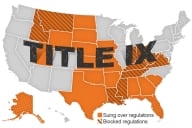You have /5 articles left.
Sign up for a free account or log in.
A recent article featured a series of questions and answers with John Willinsky, whose new book argues that whenever possible, scholarly information should be disseminated online and free. Here's how I would answer those same questions.
Q: Can you define “the access principle"?
A: While Willinsky considers knowledge, especially scholarly knowledge, a public good, most university administrators and faculty don't, at least not yet. Many universities provide support for their university presses, a practice that is commendable. The practice also supports the whole infrastructure of promotion and tenure not only at universities with university presses, but at all other universities and colleges. If all universities and colleges contributed to a fiscal pool to encourage publication, the system of scholarship could support itself under many different economic models and the grip of commercial publishers could be weakened over time.
Q: Many publishers argue that journals and materials for which one must pay are somehow by definition of higher quality than various open models. How do you respond?
A: Distribution costs have indeed been minimized over time with technology such as e-books and online access systems, but acquisition and editorial cost have not declined. Since PLoS journals are freely available, citations should be higher. Thus, the high impact factor. However, the PLoS biology journal is mirroring a field that is suited to quick and accessible publication. Further, the journal is highly subsidized and PLoS is counting on creating a large number of journals to minimize the per article cost that authors pay upfront. Over time, this model might bear fruit, but the SPARC project didn't succeed in denting commercial publication or pricing and doesn't even look to publish new journals anymore.
Q: What economic models could allow those who publish journals to embrace the access principle? How can costs be covered?
A: Open access is supported by Purdue University Press. In fact, the press would give away all scholarship if it could find a financial backer to allow this. However, the reality is that costs need to be recovered. True, open access is making some inroads allowing authors to self-archive on their institutions' digital repositories, but easy retrieval is not available. In some fields six-month delays make findings of historical value only. The most apparent hurdle, however, is the archiving needs of academic libraries, which makes paper copies (at least on an annual basis) a must. Open access has clear advantages in some fields and in some forms (journals), but not all information is suited to this paradigm of distribution.
Q: To what extent do open models of information relate not only to price, but to speed of information distribution? How does this relate to your goals?
A: A primary function of a university press is to "authorize" information by having material peer-reviewed. Technology has allowed for online editorial management systems and formatted and quick publication. Still, a major problem that libraries face as overseers of digital repositories is the fact that "it's built, but no one will contribute." The acquisition function is best suited to an organization, like a university press, that knows how to acquire and format data.
Q: An open access principle also means that members of the public who might never pay for a journal can read an article when they want. Would this change the nature of scholarship?
A: Open access should help the interdisciplinarity of scholarship as long as searching systems are robust. Information must be bundled and incorporated into the university's prime information center -- the library. Otherwise, even open access publications will be underexposed.
Q: The quest for tenure is a huge motivating factor for young faculty members. Do you think the biases of the tenure system (in favor of more established journals) hinder the spread of the access principle?
A: Easy availability obviously leads to more citations. This is true with most pieces of information, good or bad. Willinsky also cites the cream of the journal crop when he gives examples. Tenure committees will undoubtedly still evaluate individual cases on the quality of research as well as the quantity. Simply put, established journals have voices in particular fields due to longevity and the members of their editorial boards. Faculty attitudes must change to impact tenure in a serious way.
Q: How do you think scholarly publishing will be different five years from now?
A: The impact of open access can indeed be astounding. The digital enterprise will continue to move more publications to other platforms. However, if incentives (recognition, tenure, income, etc.) don't reward those who want their research to find the environments, the force of the move will be slower. Further, the advent of digital repositories with not only digitized documents but, more importantly, data sets, will bolster research once the problems of submission are solved. Scholarly communication and distribution is far more diverse that Willinsky acknowledges. The sciences and other professional fields, due to information needs, are bound to find the digital environment most suitable. Other areas, will use digital resources, but might not be as driven to move major serial or monographic publications to an e-only space.
Q: In light of the themes of your book, are you taking steps to make it available online and free?
A: Willinsky's answer is informative. The open access revolution is in its infancy. His publisher still needs to cover costs.








